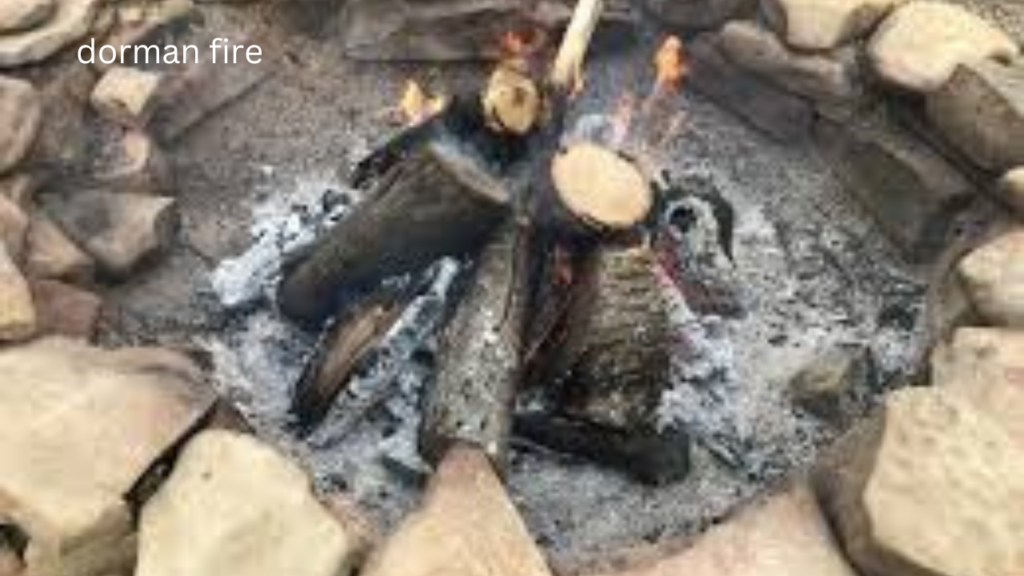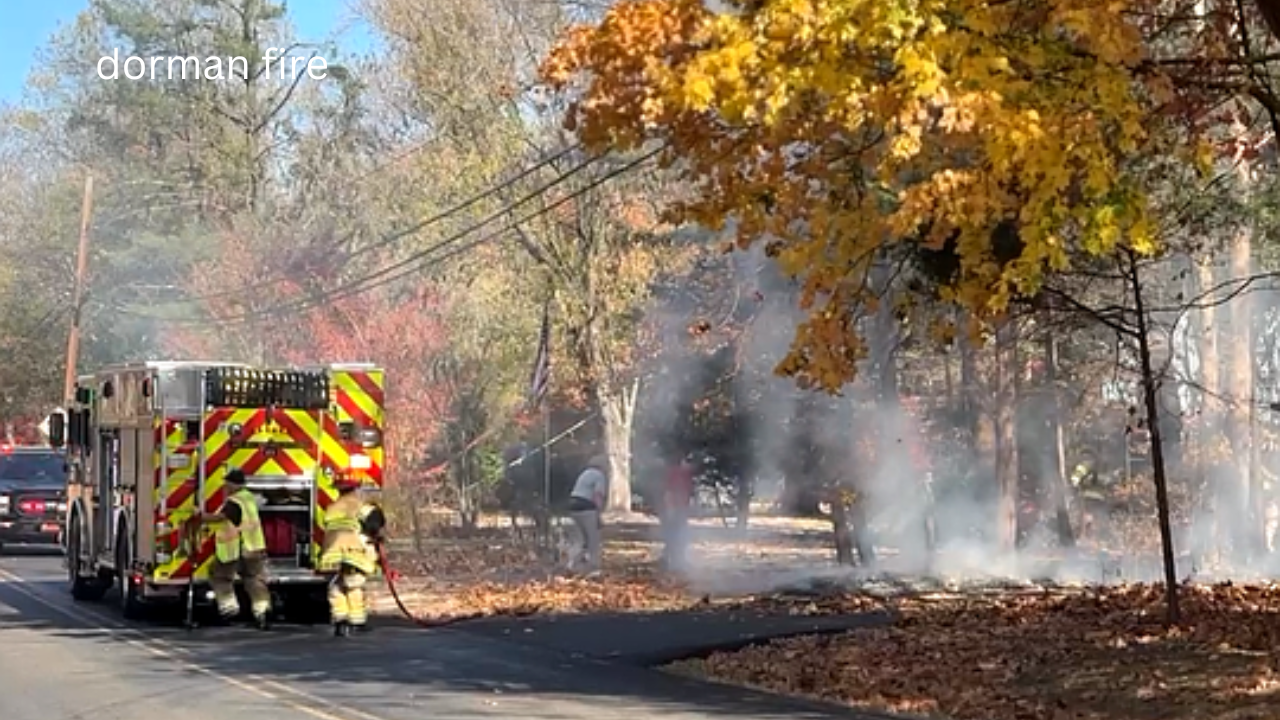Fire safety is critical to any community, industry, or residential area. It safeguards lives, property, and natural resources, preventing devastating impacts of fires. The Dorman Fire has been a pivotal event in recent years that reshaped fire safety standards across various sectors. This fire, which broke out in [location], sent shockwaves through local communities, governments, and industries, highlighting gaps in existing fire safety regulations and practices. This article will explore how the Dorman Fire altered fire safety standards, what lessons were learned, and how those lessons continue to shape fire prevention, firefighting strategies, and emergency response protocols today.
The Dorman Fire: An Overview
The Dorman Fire was an enormous wildfire that ignited in [year] and rapidly spread through the dry forests and brushlands surrounding [location]. The fire spread alarmingly due to several factors, including high winds, extreme temperatures, and prolonged periods of drought. Within hours, the fire escalated from a small, localized blaze to a destructive force threatening homes, infrastructure, and the local ecosystem. Thousands of residents were forced to evacuate while emergency crews worked tirelessly to combat the flames.
The Dorman Fire tested the resilience of communities and firefighters and exposed flaws in the existing fire safety standards. In the wake of the fire, a comprehensive review of fire safety regulations was conducted, leading to significant reforms to prevent similar future disasters. These reforms were implemented at local, state, and national levels, focusing on improving fire preparedness, response, and mitigation efforts.
Key Lessons Learned from the Dorman Fire

The Importance of Early Detection Systems
One key lesson from the Dorman Fire was the critical importance of early detection systems. The fire’s rapid spread could have been mitigated if detected earlier. Early detection is vital in minimizing the damage caused by fires, allowing firefighters to respond more effectively and evacuate affected areas promptly.
Following the Dorman Fire, many communities and fire departments invested in advanced fire detection technologies, such as satellite imaging, drones, and infrared sensors. These technologies allow for faster identification of wildfires, especially in remote or hard-to-reach areas. In addition, improved communication networks have been set up to relay fire alerts to local authorities and residents quickly, enabling faster evacuations and better resource allocation.
Better Coordination Among Emergency Services
The Dorman Fire underscored the need for better coordination among various emergency services, including fire departments, law enforcement, and medical teams. During the fire, confusion and miscommunication between agencies led to evacuation delays and inconsistent resource deployment, which prolonged the firefighting efforts.
New collaborative frameworks were established to address this, where multiple agencies could work together seamlessly during a large-scale disaster. Joint training exercises, combined response protocols, and centralized command structures have become the norm. This unified approach ensures that resources are used efficiently, information flows freely, and decisions are made quickly.
Improved Building Codes and Fire-Resistant Materials
Another key takeaway from the Dorman Fire was the vulnerability of certain buildings to fire damage. Many homes and businesses in the affected areas were destroyed not only because of the wildfire but also due to outdated building materials and highly flammable designs.
As a result, many local governments implemented stricter building codes, requiring fire-resistant materials and better construction practices. In particular, homes in wildfire-prone areas must now have fire-resistant roofs, walls, windows, and decks. Fire-resistant landscaping and defensible space around properties have also been promoted as an effective mitigation strategy. These changes have helped reduce the risk of damage to structures, even in a large-scale wildfire.
Public Education and Awareness Campaigns
The Dorman Fire demonstrated the need for better public education and awareness about fire safety. Many residents were unprepared for the scale of the wildfire and did not have proper evacuation plans or emergency supplies in place. This lack of preparedness led to confusion and panic when the fire spread.
Local governments and fire departments launched widespread public education campaigns in response to these challenges. These campaigns focus on fire safety practices, evacuation plans, and maintaining defensible space around homes. Public workshops, online resources, and school programs have also been developed to raise awareness about fire prevention and how individuals can protect themselves and their families during a wildfire.
Strengthened Wildfire Management and Response Protocols
The Dorman Fire highlighted the importance of effective wildfire management strategies. The fire grew exponentially because firefighting efforts were initially overwhelmed, and there was a lack of adequate resources and strategies to control the blaze early on. The lessons from this incident led to significant improvements in firefighting tactics, including using aerial firefighting resources like helicopters and fixed-wing aircraft and deploying specialized fire crews trained to fight wildfires in rugged terrain.
Moreover, fire departments began implementing more proactive wildfire management practices, such as controlled burns, to reduce fuel loads and prevent the spread of large-scale wildfires. These measures help prevent future fires and ensure firefighting teams are better prepared for emergencies.
Changes in Legislation Following the Dorman Fire
In the wake of the Dorman Fire, several legislative changes were enacted to strengthen fire safety standards at both the local and national levels. These new laws focused on increasing funding for wildfire preparedness, mandating fire-resistant building practices, and ensuring that communities in high-risk areas had adequate emergency evacuation plans.
Federal and state governments also established funds for research and development in wildfire detection, response technology, and fire suppression techniques. This funding has led to advancements in firefighting equipment, such as more efficient fire retardants, specialized tools, and innovative firefighting drones that assist in monitoring and combating wildfires.
The Role of Technology in Post-Dorman Fire Safety Reforms
Technology played a significant role in transforming fire safety standards after the Dorman Fire. One of the most notable advancements was using machine learning and artificial intelligence to predict fire behaviour and track wildfire development in real time. These technologies have been integrated into fire management systems to help predict the spread of fires, assess risks, and determine where resources should be deployed.
Furthermore, digital mapping systems have been developed to coordinate firefighting efforts. These maps provide real-time updates on fire activity, road closures, and evacuation routes, allowing emergency responders and residents to stay informed and make decisions based on the most accurate information.
Conclusion
The Dorman Fire was a powerful reminder of the importance of robust fire safety standards. The lessons learned from this disaster have helped improve firefighting efforts and community preparedness and led to widespread changes in fire safety regulations, building codes, and technological innovations. By embracing these lessons, we can ensure that future fires are managed more effectively, saving lives, property, and natural resources.
FAQs
What was the Dorman Fire, and where did it occur?
The Dorman Fire was a large-scale wildfire that broke out in [location] in [year], causing significant damage to homes, infrastructure, and the surrounding ecosystem. It became a turning point for fire safety reforms.
How did the Dorman Fire impact fire safety standards?
The Dorman Fire exposed vulnerabilities in existing fire safety regulations and led to changes in building codes, emergency coordination, fire prevention efforts, and the use of technology in firefighting.
What lessons were learned from the Dorman Fire?
Key lessons from the Dorman Fire included the importance of early detection systems, improved coordination among emergency services, stricter building codes, enhanced public education, and strengthened wildfire management strategies.
How did technology play a role in the aftermath of the Dorman Fire?
Technology, including satellite imaging, drones, and AI-driven systems, significantly improved fire detection, monitoring, and response. These tools allow for faster identification of fires and more efficient management of firefighting resources.
What legislative changes were made after the Dorman Fire?
In response to the Dorman Fire, new legislation was enacted to increase funding for wildfire preparedness, mandate fire-resistant construction practices, and enhance emergency evacuation planning in high-risk areas.
You May Also Read: https://usdigitaltime.com/harleysville-hotel/




